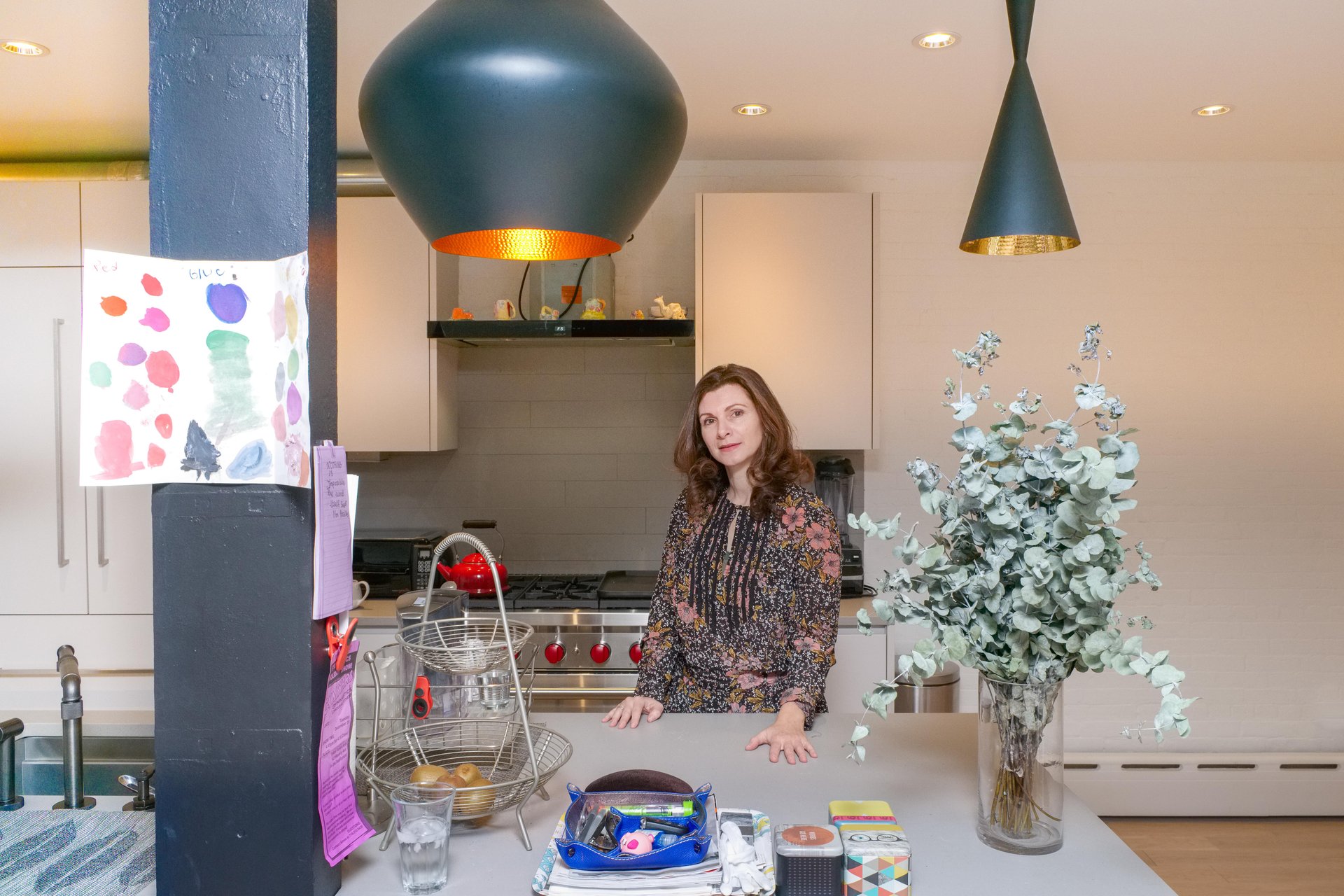Brooklyn-born handbag and accessories designer Monica Botkier, founder of her namesake label, has a knack for renovation. “It’s a passion project,” she explains as she welcomes me into her Fort Greene home. The old carriage house dates back to 1901, and she has spent the last year working on it. “We completely gutted it. It’s our second renovation in ten years. We just love to renovate!” she says, passing a cluster of ladders and tarps on the first floor, a testament to the ongoing project. We head up to the second level.
High ceilings with black beams, a white painted brick wall, white wooden floors, and tall windows looking out over a garden create an open, loft-like space. “[It] has such great bones,” the designer muses, noting that the industrial feel is what she loves most. “I want it to have a sense of warmth. I love to balance the modern and the historical.”
Botkier’s décor is sparse but precise. She has developed a keen sense of how to curate her space, both architecturally and from an interior design standpoint. “I have everything I need now. I don’t want clutter,” she says.
Opposite the long dining room table, we stop in front of a Norman Jean Roy photo on the wall, signed by the artist and dated 1998 — a gift to Botkier from her days as his assistant. Other pieces in the room include a Baldessari painting, and, her favorite, an oversized Polaroid of an orange cat atop a bare bottom by Tom Sachs. “I don’t have a pet, so this picture is my pet,” Botkier jokes.
Past the second sitting area (her favorite spot in the house), is the her eldest daughter’s bedroom. The room is all white, except for a giant heart-eyed emoji pillow on the bed. She takes a seat on a furry bean-bag chair and we discuss what it’s like to grow up in Brooklyn. “I can’t imagine raising my family anywhere else,” Botkier says, adding that there is something pleasingly familiar about a Brooklyn accent “Brooklyn was so uncool when I was growing up. I couldn’t wait to get out. I took it for granted for so long, but this was always home.”
We head upstairs to the rooms of her other two children and the bedroom/home office she shares with her husband. When I ask what the best part of the house is, she replies, “Everyone has their own space.” Not to mention their own bathroom. (There’s a total of seven.) “For urban living, this is totally my dream house. Especially because I have a parking garage,” Botkier says.
There is such a clear, evolving narrative here, that I ask if there is a similar theory behind Botkier’s design process. “I’m always thinking about the story of the girl I’m designing for,” she says, adding that the architecture of her handbags is a detail that has carried over into her renovation.
Before walking me out, she shows me a collection of family photos that she took herself. As pristine as the house is, there is also a sense that it is truly lived in.“It’s a balance between real life and a Pinterest board,” Botkier says. “You can’t be too precious.”



